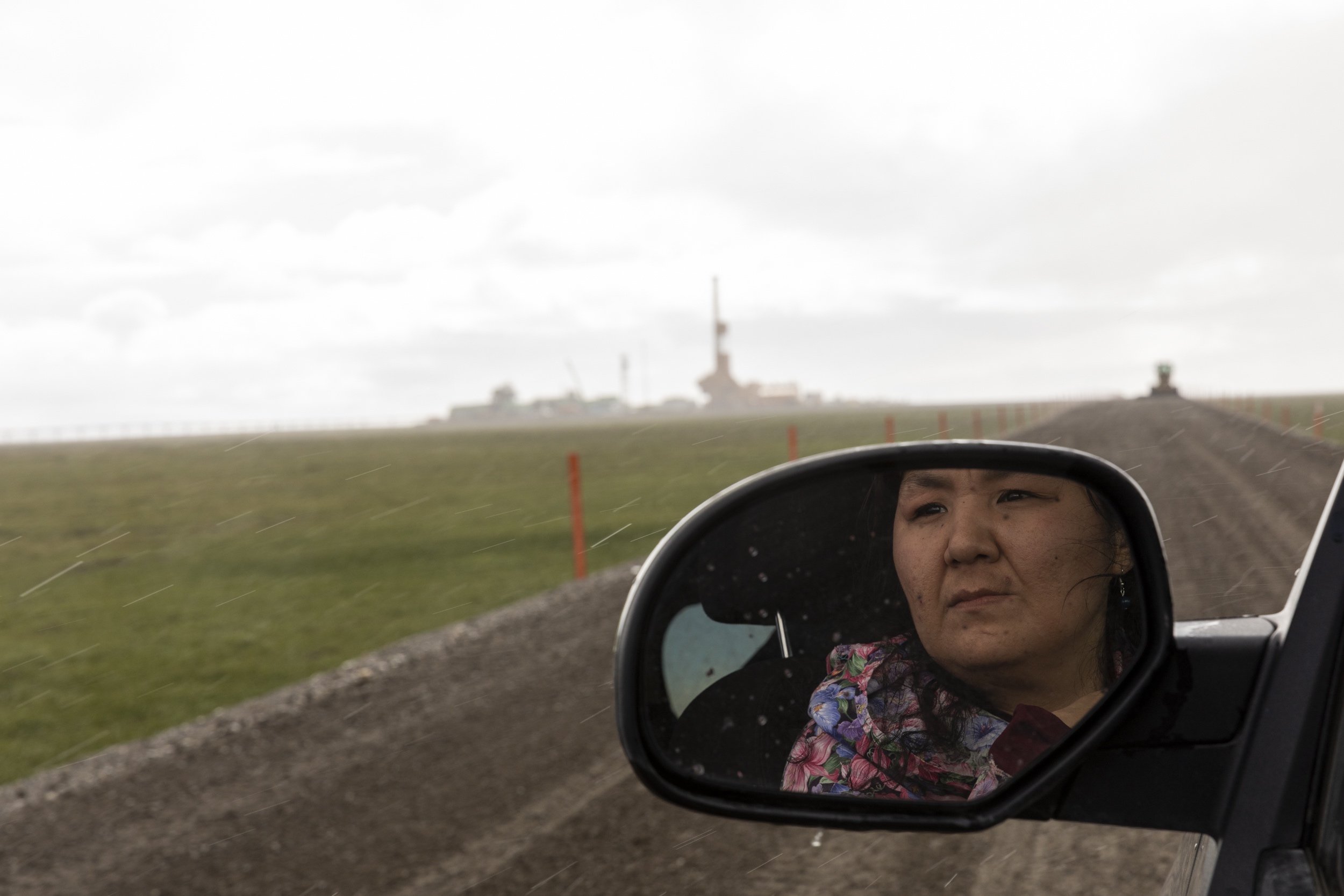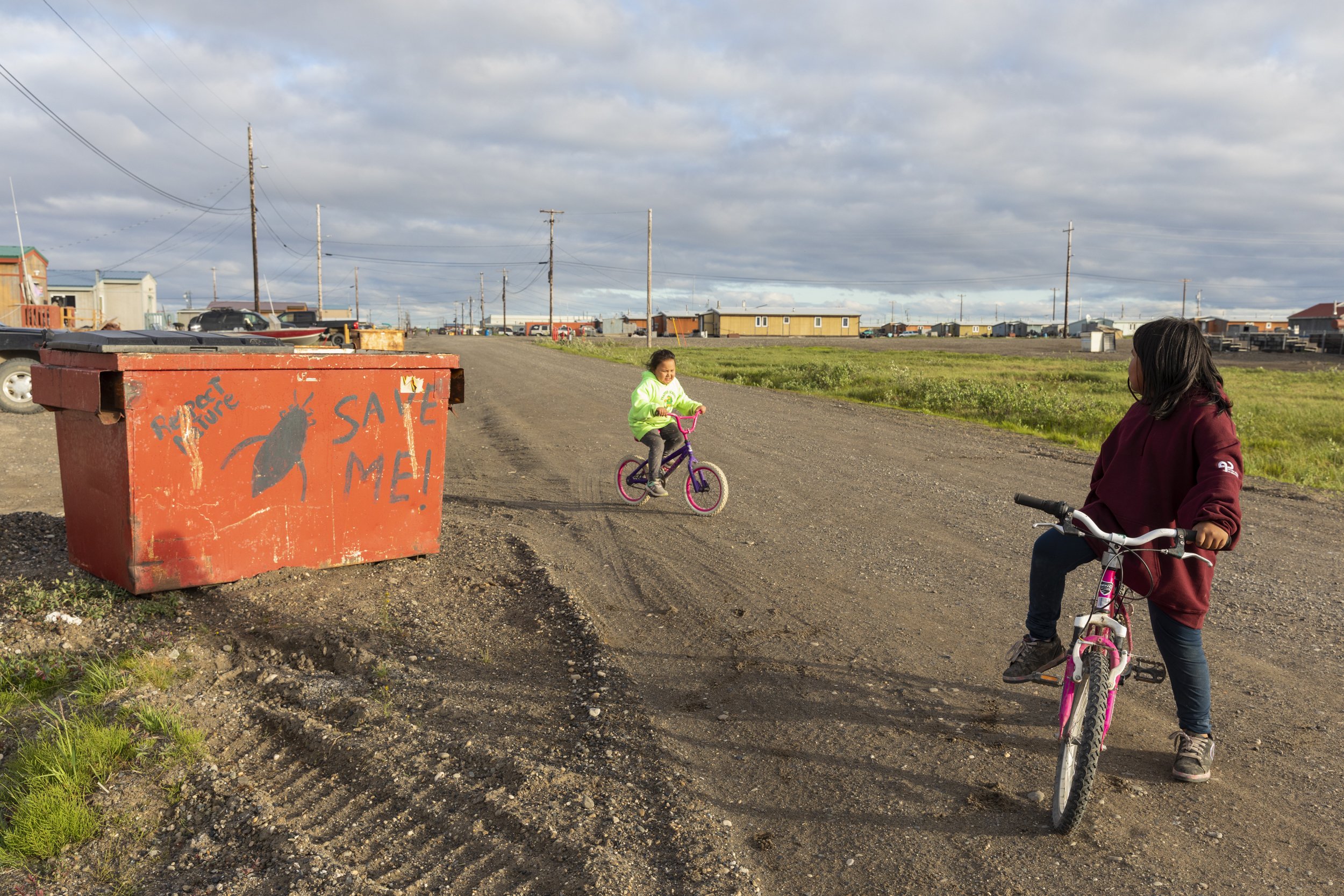
The ConocoPhillips Willow Project, which received its final EIS from BLM on February 1st, and is awaiting a final Record of Decision from the administration, expected sometime in early March. Now, there is a new resolution in the Alaska State Legislature calling for unanimous support for the Willow Project: https://www.akleg.gov/basis/Bill/Detail/33?Root=hjr6
THE THREAT OF THE PROPOSED WILLOW PROJECT
TAKE ACTION! In less than 30 days the final decision on permitting will be made. Please don’t wait, send a letter now to U.S. Dept. of Interior Secretary Deb Haaland, U.S. Senator Lisa Murkowski, U.S. Senator Sullivan, U.S. House Rep. Mary Peltola, and President Joe Biden. Urge “No Action” on the proposed Willow Project (updated 2/6/23) >>>>>>>
“The MDP [Willow Master Development Plan] includes up to five drill sites, a central processing facility, an operations center pad, up to 38.2 miles of gravel roads, up to 924.2 miles of ice roads during construction and up to 215.6 total miles of resupply ice roads during operations, 1 to 2 airstrips, up to 337 miles of pipelines, and a gravel mine site. In addition, the Proponent would submit applications to the State of Alaska for a module transfer island (MTI) on State submerged lands to support module delivery via sealift barges.” -BLM EIS Statement
This project is massive — it disregards human rights & will intensify the climate crisis
Residents of Nuiqsut, the Inupiaq community closest to the proposed Willow project, is already inundated with oil and gas drilling sites that have wrecked havoc on their life and livelihood. Both the City of Nuiqsut and the Native Village of Nuiqsit have voiced opposition to the Willow Project. In their letter (below), they cite numerous concerns they have with the project including: lack of adequate consultation, the significant impact on the health of Nuiqsut residents, and the imminent detrimental loss of access to food/subsistence resources.
The proposed Willow project has had little to no research on the impact of the cumulative projects across the Arctic Slope of Alaska. This is the birthing grounds of the 60,000 caribou — the Teshekpuk Lake caribou herd. Nuiqsut residents have spoken out about sick fish, signs of starvation in caribou, and toxic air quality directly caused by oil and gas extraction within their homelands.
Climate change in the Arctic is happening faster than any other place in the world; continuing fossil fuel dependence is speeding this climate chaos out of control. Additionally, the detrimental amounts of pollutants and contaminates caused by drilling and extraction projects is happening, literally, in the back yards of Iñupiaq peoples and without their full and informed consent.
photos : Keri Oberly
Native Village Of Nuiqsut & City of Nuiqsut letter
January 25, 2023
To read the full letter, click through to the PDF: Letter from the Native Village of Nuiqsut and City of Nuiqsut stating opposition to the Willow project and dissatisfaction with the outcome of the process. You can read our full letter of support of Nuiqsut here.
Current protections for Special Areas in the “Western Arctic/Arctic Slope” — also known as the National Petroleum Reserve-Alaska or NPR-A — must be honored and preserved. The current land management plan designated these Special Areas as protected based on extensive science and broad public involvement.
Any attempt to undermine these protections is a threat to water, land, animals and people.
Inupiaq peoples have lived in the Western Arctic and Arctic Slope region for thousands of years, rely on its animals, lands and waterways for their food, health, culture and way of life.
The Native Village of Nuiqsut is currently engaged in a lawsuit against Bureau of Land Management for insufficient health and environmental impact protections within the NPR-A. Before moving forward to open up anymore land, BLM needs to address the already controversial projects currently happening.
The Western Arctic / Arctic Slope includes extraordinary wildlife habitat and rich waterways, nourishing 13 communities within and adjoining the area’s boundaries, along with hundreds of thousands of animals like geese, loons, salmon, falcons, polar bears, bowhead whales, orcas, and three herds of caribou.
The Western Arctic supports a robust ecosystem that includes caribou, geese, loons, salmon, polar bears, and bowhead whales, along with 13 communities within and adjacent to the region. Any disruption that jeopardizes the ecosystem’s health puts all of its inhabitants at risk.
Protecting Special Areas of the Western Arctic is essential to addressing and adapting to the changing climate.
The 2013 land management plan for the Western Arctic established protections for the Teshekpuk Lake, Colville River, Utukok Uplands, Peard Bay and Kasegaluk Lagoon special areas because of their importance to the health of water, wildlife, land and people.
The Interior Department’s effort to undermine protections by undoing the current management plan is not only a waste of time and money, but also an attempt to give public land to private interests at the expense of wildlife and local communities.
The push for leasing more of the Western Arctic to oil and gas exploitation goes against the American public’s desire for investment in renewable resources rather than reliance on fossil fuels.
The Interior Department must be held accountable for its obligation by law to protect Alaska Native peoples, wildlife, water, land and the global climate.
“ I repeat. In all this, we were never consulted. After the State leased our land to the oil corporations, they moved onto our land to behave in ways that would never be permitted today.
Gravel, a most precious commodity in the Arctic, was removed from river beds and beaches without proper regard to environmental impact. The gravel was used to build roads and pads over our old graveyards, and our sod houses at our fishing and summer camps were destroyed. Fish spawning areas were destroyed, and fish were killed during seismic exploration in our lakes.
The ancient caribou migration routes began being disturbed along our coast, and many of us feel that Prudhoe Bay and associated pipeline construction is to blame for what appears to our State game biologists to be a serious decline in our caribou herds. Our land began being littered by the junk of oil exploration. We suffered serious trespass.
— Eben Hopson The Berger Speech
Further Background
The Western Arctic, also known as the NPR-A, is the largest public land in the United States. Within the most northern part of Alaska, the area holds extraordinary wildlife habitat and rich waterways, nourishing animals and plants that have provided food and the foundation of culture and traditional knowledge for indigenous people for thousands of years.
Thirteen communities within and adjacent to the Western Arctic hunt, fish, gather, and use Western Arctic lands for their food and culture. The region has long-documented human use.
The official name for the Western Arctic — the National Petroleum Reserve-Alaska (NPRA) --reflects a colonial perspective on land use and ownership. The area, in fact, is part of the vast ancestral homelands of Gwich’in and Inupiat people who developed and practice ways of doing things to protect and sustain the health of animals, plants, food and water sources, and their ways of life.
When the Navy transferred the Western Arctic, or NPRA, to the Department of the Interior in 1976, Congress wrote a specific law calling for the protection of wildlife, surface resources, and special areas. Congress identified Teshekpuk Lake as a special area worthy of maximum protection, and those protections continue today.
The 2013 Integrated Activity Plan took a big leap forward in the understanding of science and spatial data. The areas protected under this land management plan reflect this greater scientific understanding, and awareness that people, animals and plants depend on interconnected natural ecosystems, not fragmented migratory routes and watersheds.
The public record leading up to the 2013 IAP further contains strong justification for recognizing and protecting special areas and wildlife in the Western Arctic.
** “Western Arctic”, “Arctic Slope”, and “North Slope” are used interchangeable in reference to the impacted region.
TAKE ACTION and Send your custom Letter below to support “No Action” on the Willow Project






